Top Photo: Ghost pipe growing and in bloom among ferns on Dinosaur Trail.
Ghost pipe, or Indian pipe, though resembling a fungus is actually a flowering plant. The plant’s tissue does not contain chlorophyll and it doesn’t photosynthesize its own nutrients as most plants do. It has to rely on other sources to maintain itself.

Ghost pipe gets its nutrients by tapping into fungi which themselves are tapped into nearby tree roots. Each summer the plant sends up white translucent stems topped with drooping white flowers to reproduce. Pollination is probably achieved through the visits of bees, flies and other insects. When mature, seeds drop from the now erect flowers and are dispersed by the wind. The plant turns black and dries out but may remain aboveground for some time before retreating below the surface to wait for another growing season to again emerge, reproduce and fade from view.
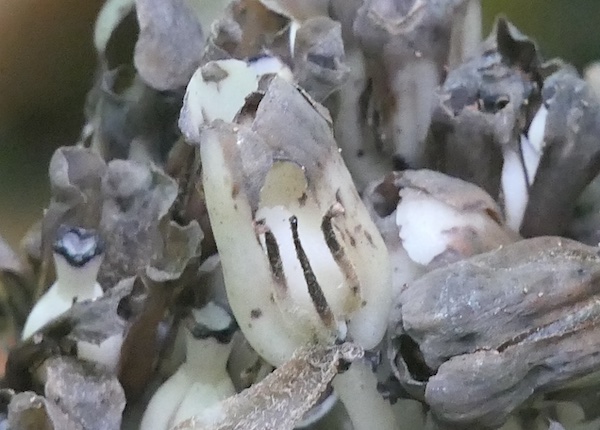
The ghost pipe pictured is on the Dinosaur Trail near the Edmontonia.
A green tree frog peaks out from one of three frog pipes installed throughout the museum’s outdoor trail system.

Ranger Robert informed me via radio call that he was watching a caterpillar being attacked by yellowjackets and that I might find it interesting. I did.
As I arrived at the scene I recognized the caterpillar as a sphinx moth caterpillar.
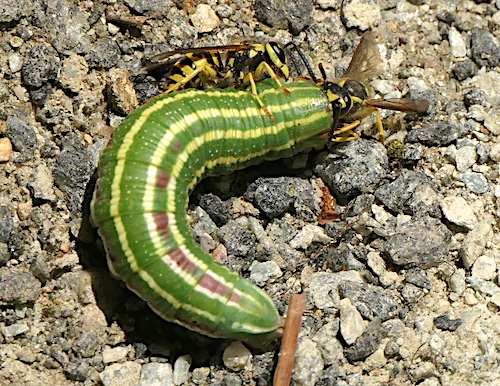
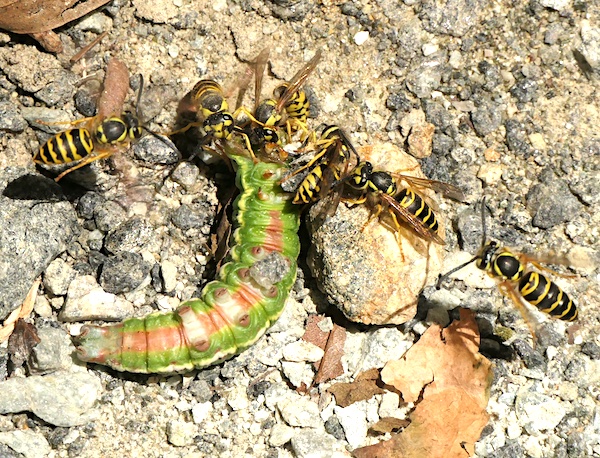
Most sphinx moth caterpillars have a “horn” located on the last segment of their body. The moth I was looking at did not have a horn, but its green body with white and yellow stripes and dull red or pink highlights steered the identification towards pine sphinx caterpillar.
The clincher would be the face, pine sphinx has a very distinctive triangular head and facial markings. But this caterpillar didn’t have a face, the yellowjackets were chopping the larva to pieces starting at the head end. The entire head, or most of it, was gone.
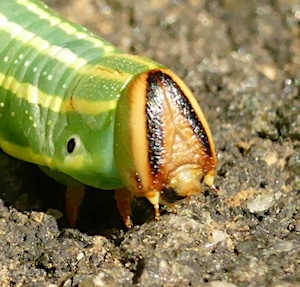
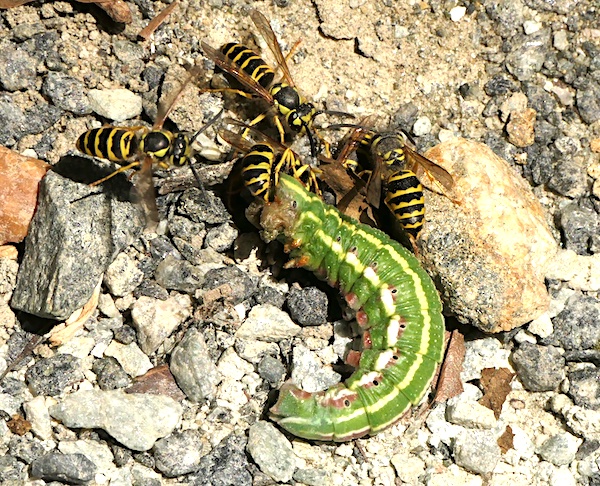
A quick check with an internet reference confirmed the markings as described above, pine sphinx.
Yellowjackets stock the larval chambers of their hives with fresh meat for the young to feed on and grow. The chunks of meat the wasps were tearing from the caterpillar would be packed into individual chambers in the hive and consumed by the larvae.
A little less than two hours later the yellowjackets were still at it. Word had spread. There were many more hive members on the job.

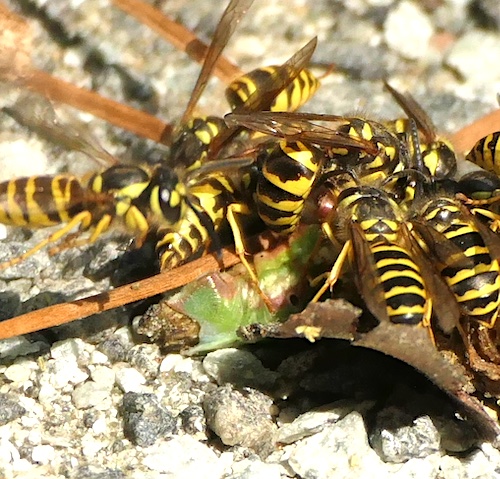
And finally, each year there’s a great blue skimmer that perches in the dappled sunlight on the bare branches or leaves of a swamp white oak tree in our wetlands. The oak grows next to the boardwalk which leads into the wetlands. Obviously, this is not the same great blue skimmer each year. They simply don’t live that long. It’s likely though, that the skimmer seen perched in this location each summer season is a descendant of the previous year’s skimmer.

Look for these things and more on your next walk around the outdoor exhibits at the museum.
Enjoy your walk!
Ranger Greg